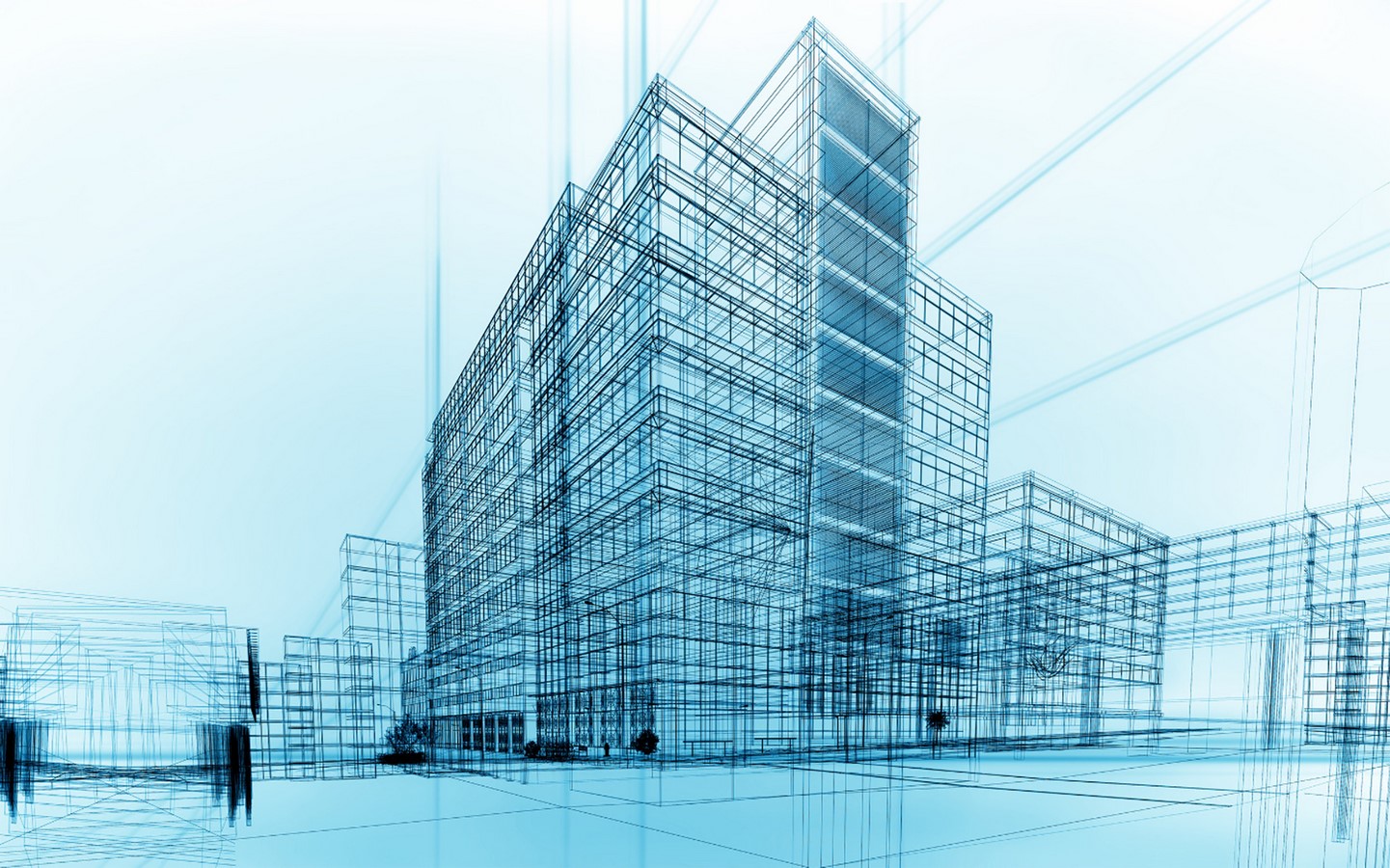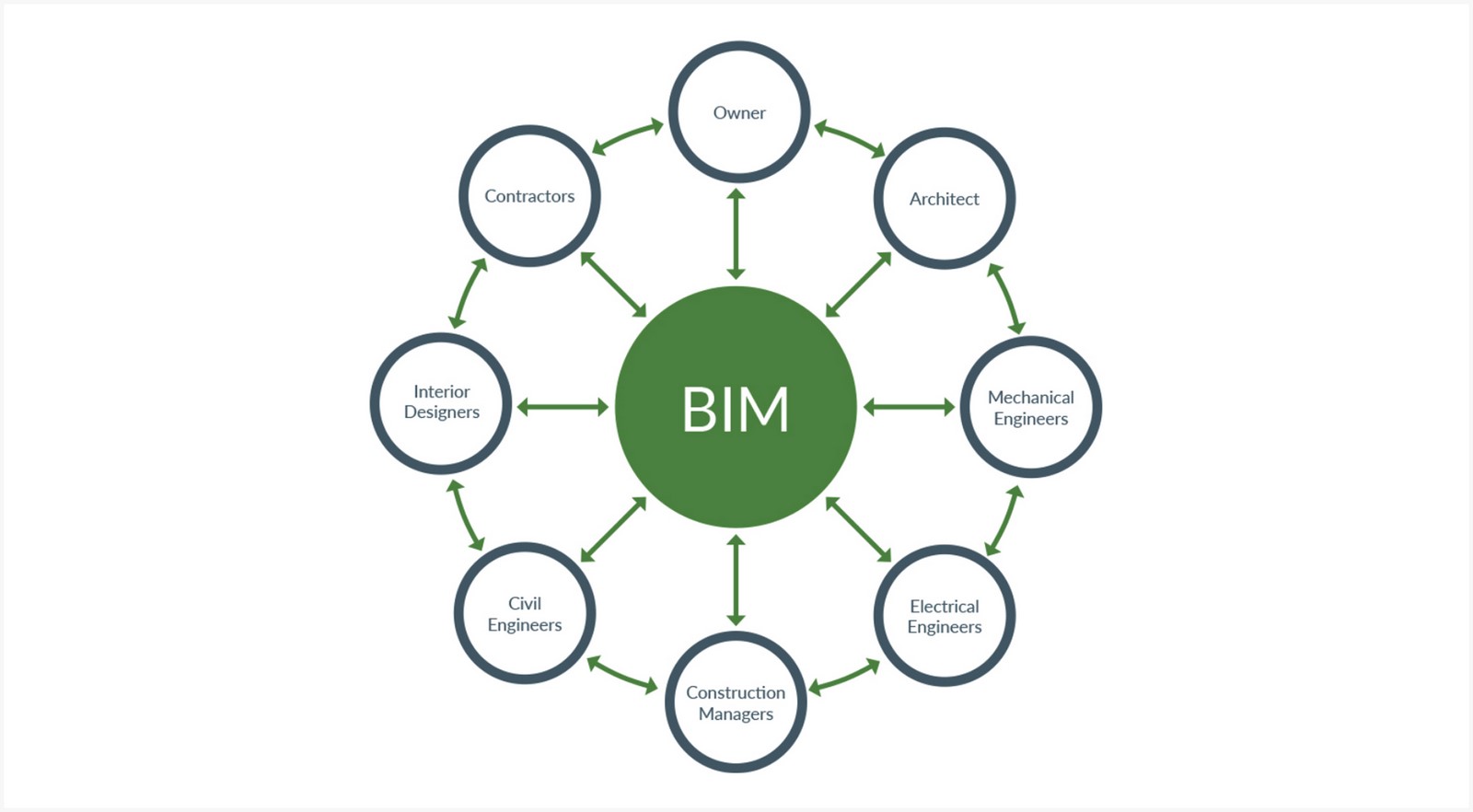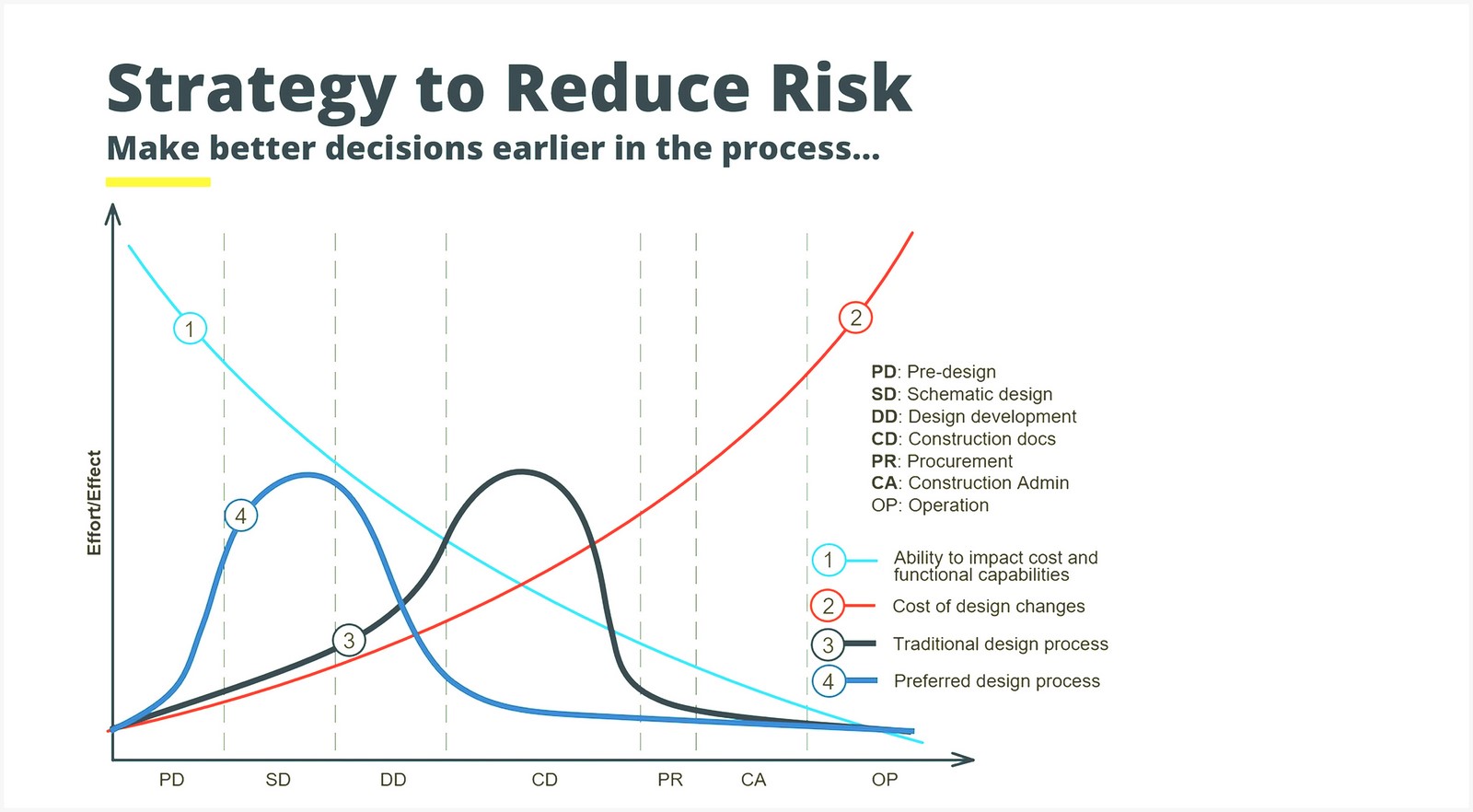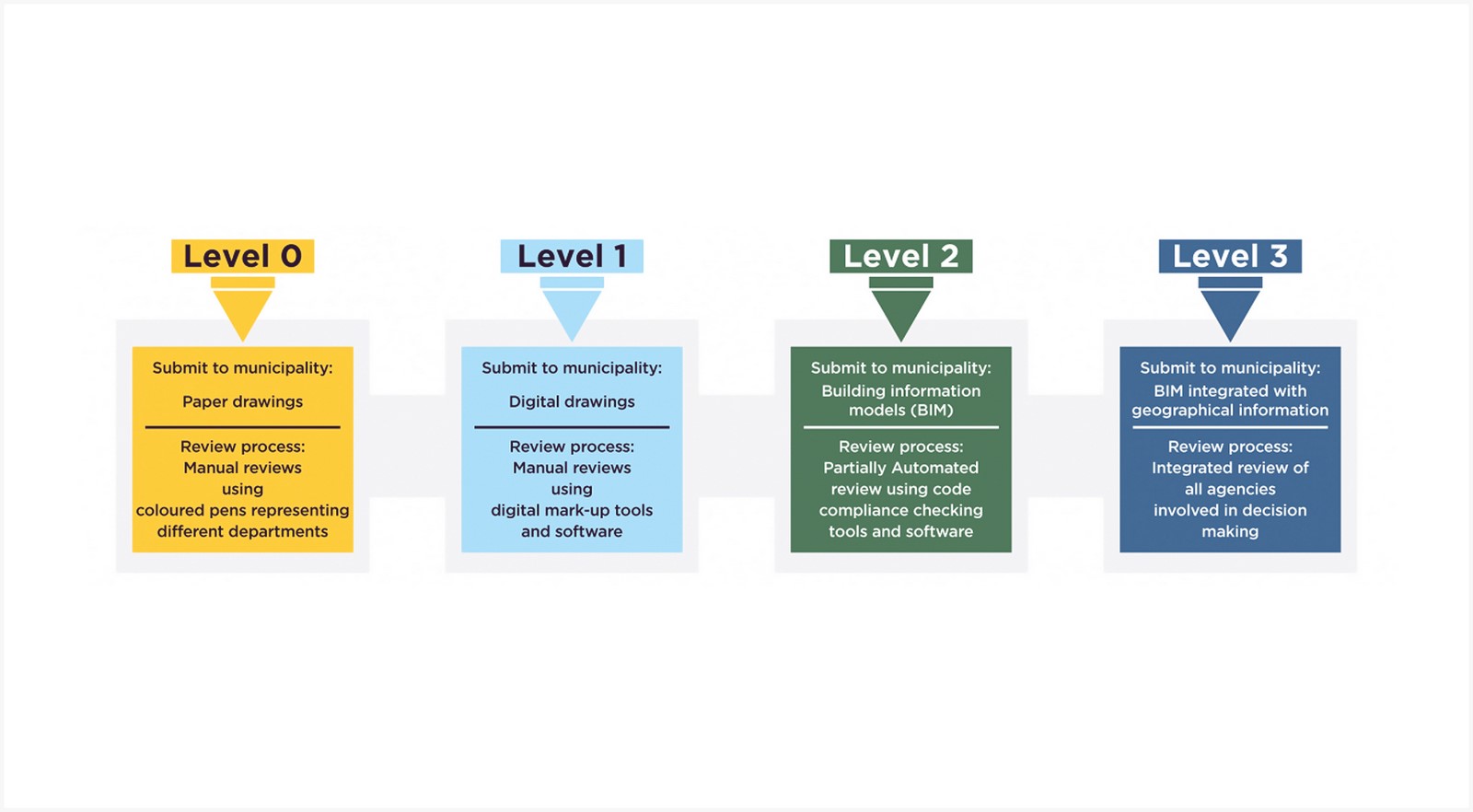Building Information Modeling (BIM) is a digital process of creating 3D models of structures and systems to produce the required documentation and information for Architectural, Engineering and Construction projects. The BIM software and tools can analyze models for compliance with various International and local building codes and standards for regulation purposes. BIM models produce information like BIM elements, schedules and cost items, which are analyzed with an object-oriented paradigm to generate Cost-Regulation reports and similar documentation. BIM ensures fast, effective design and decision-making strategies, ease of communication for stakeholders, accurate compliance with building codes, practical cost analysis and, prioritized high-quality projects.


Building Information Modeling (BIM)
BIM is a digital process of creating a virtual design construction model used by Architects and engineers to process and collaborate with buildings, civil structures and systems. BIM is involved in creating and using coordinated, internally consistent, computable information about a project in design and construction. BIM contains complete details on the project; any changes in the project lead to changes in the model, which integrates changes in schedules and other components, making the project internally consistent. BIM models can simulate the design and construction process for better evaluation in terms of sustainability, costing, and project management; the digital model is intelligent and practical for analyses and integrations. The role of the Owners, Architects, engineers and contractors has also become better integrated through coordinated BIM systems. A BIM process is opposite to a traditional documentation process that incorporates Plans, Elevations, Sections, Schedules, Details, and 3D models to create the final documentation. BIM technology develops a 3D model that can produce all required information about the project for consistency, efficiency and zero data loss. BIM can bind all project stakeholders together, and documentation becomes the product of the design.

Why Building Information Modeling (BIM)?
Building Information Modeling (BIM) technology benefits the project by providing better communication and management, design and analysis techniques, decision-making support, cost control and easy production of construction documents. BIM can create simulations and analysis of the project by creating a 3D model that is incorporated with real-world variables. The 3D model is created in context and lines of study for better representation, evaluation and conception of the real-world variables. BIM projects also have integrated project delivery (IPD) methods; one contract binds all three parties of Owner, Contractor and Architect into one team where the success and failure of the project are shared, clearing out the liabilities and conflict. The BIM platforms produce Architectural, Engineering and Construction (AEC) documents for project rollouts and quality takeoffs for streamlined bidding and accurate estimates. BIM can also provide better facility management by providing accurate information about the building to resolve conflicts, reduce requests for information (RFI) and change orders during construction. BIM is multilayered, internally consistent, and coordinated to create effective, streamlined projects.

BIM and Building Codes/Standards
Building Information Modeling (BIM) involves creating 3D models of permitted constructed structures that comply with Building codes and standards that set minimum requirements for building design, construction, and maintenance to ensure the user’s health, safety, and welfare. BIM creates a digital model of building structures that are analyzed for compliance issues by the automated plan review that is integrated into BIM systems. Any built project needs to be compliant with approved guidance documents on Structure, Fire safety, Contamination/moisture, Toxic substances, Passage of sound, Ventilation, Sanitation /water, Drainage/water disposal, Combustion appliances and fuel storage systems, Falling collision and impact, Conservation of fuel and power, Overheating, Electrical safety, Security, Electronics communications infrastructure, Infrastructure for the charging of electric vehicles and materials/workmanship. Compliance with building codes will advance the permit, commissioning, and property/sales tax processes. BIM can generate compliance reports and documentation to understand and implement the necessary measures; this ensures the accuracy of compliance assessments and the quality of the built structure. It is essential to evaluate the standardization of building codes in BIM software, specialized training, and the cost of implementation to generate code-compliant projects through BIM systems.

BIM and Cost Management
BIM can generate estimates, cost schedules and management strategies by collecting and analyzing information from design models and construction environments. BIM technology can visualize, coordinate, simulate, optimize, and analyze data from project stages of decision-making, Design Development, Bidding, Construction and Operation to generate accurate reports to maximize profits and decision-making abilities. The project timelines, involvement of many participants, lack of shared information platforms and mismanagement are overcome by BIM technology to implement effective Cost management and better coordination between stakeholders. BIM technology can create comprehensive 3D models and plans to generate different schemes and cost estimates that are evaluated and finalized for project development. In the design process, the linkage effect simultaneously updates all project information like design, material properties, costs, and project data to reduce errors, omissions, rework and project costs. In the bidding and construction phases, all parties can use the same BIM models and generate bills of quantities for ease of procurement, better communication, and transparency and to avoid manual errors of miscalculations and duplication. BIM technology incorporates a digital process for effective cost management, optimizing the workflow and upgrading management for successful architecture, engineering and construction projects.
Reference
- (No date) EU BIM. Available at: http://eubim.eu/wp-content/uploads/2021/05/Cost-Benefit-Analysis-for-the-use-of-BIM_user-handbook.pdf (Accessed: 26 August 2023).
- (No date a) LQWKH&RVW application of building information modeling … – iopscience. Available at: https://iopscience.iop.org/article/10.1088/1742-6596/1648/3/032016/pdf (Accessed: 26 August 2023).
- What is BIM: Building information modeling (2023) Autodesk. Available at: https://www.autodesk.com/solutions/aec/bim (Accessed: 26 August 2023).
- Building information modeling (no date) Building Information Modeling – an overview | ScienceDirect Topics. Available at: https://www.sciencedirect.com/topics/engineering/building-information-modeling (Accessed: 26 August 2023).
- (No date a) Episode 8: Understanding bim stages – bim thinkspace. Available at: https://www.bimthinkspace.com/2008/02/the-bim-episode.html (Accessed: 26 August 2023).
- Koumari, L. (2022) What is building information modeling (BIM)?, Parametric Architecture. Available at: https://parametric-architecture.com/what-is-building-information-modeling-bim/ (Accessed: 26 August 2023).
- Bim in architecture (no date) ONG&ONG. Available at: https://www.ong-ong.com/insights/bim-in-architecture/ (Accessed: 26 August 2023).
- Villaschi, F.S., Carvalho, J.P. and Bragança, L. (2022) BIM-based method for the verification of Building Code Compliance, MDPI. Available at: https://www.mdpi.com/2571-5577/5/4/64 (Accessed: 26 August 2023).
- (No date) Object-centred automated compliance checking: A novel, bottom … – itcon. Available at: https://itcon.org/papers/2022_17-ITcon-Doukari.pdf (Accessed: 26 August 2023).
- Library guides: Architectural engineering: Building codes and standards (no date) Building Codes and Standards – Architectural Engineering – Library Guides at Penn State University. Available at: https://guides.libraries.psu.edu/c.php?g=388626&p=3484426 (Accessed: 26 August 2023).
















